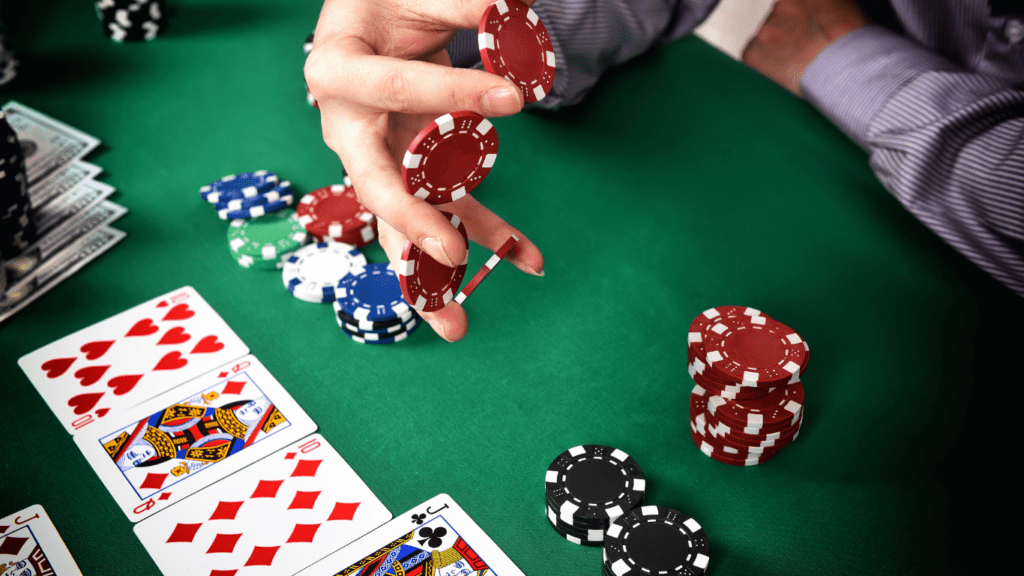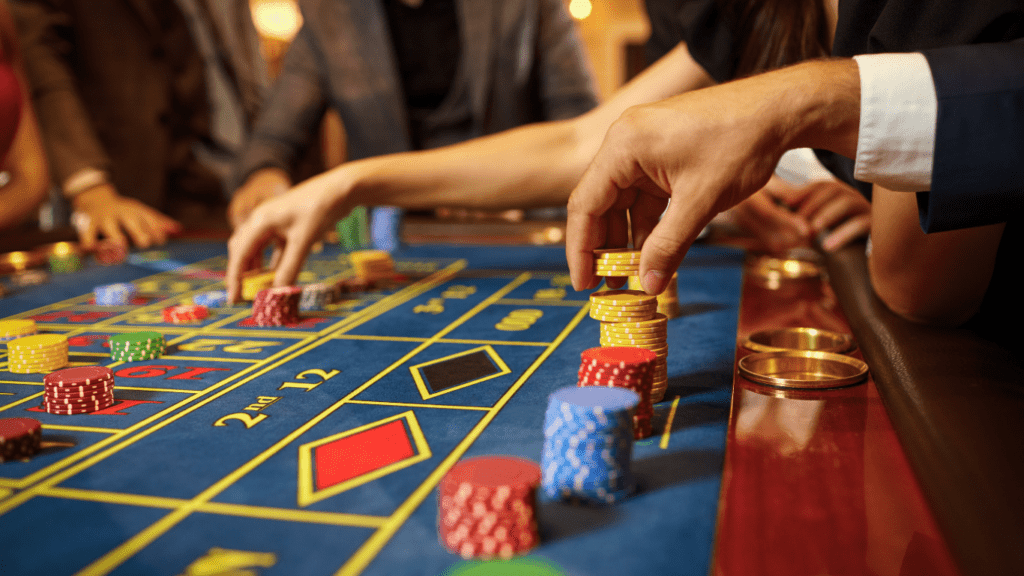Gambling has always carried an air of thrill and danger, but for high-stakes gamblers, the stakes are more than just financial—they’re personal. These individuals live on the edge, chasing adrenaline and fortune in equal measure. Their stories are often larger than life, filled with dramatic wins, crushing losses, and moments that define their legacies.
The Allure Of High-Stakes Gambling
High-stakes gambling captivates people with its mix of adrenaline, wealth, and the promise of life-changing outcomes. This allure creates a unique, almost irresistible environment for risk-takers.
What Makes It So Addictive?
High-stakes gambling combines unpredictability, social status, and intense emotional highs. The uncertainty of outcomes keeps players hooked, as the next bet might erase previous losses or deliver a monumental victory. Many are drawn to the prestige associated with playing at high levels, where they compete with equally ambitious individuals in exclusive settings.
Biological responses, like dopamine release, enhance the addictive nature of these games. Wins trigger significant dopamine spikes, fostering feelings of euphoria, while near misses keep players motivated to chase rewards. Studies from the National Center for Responsible Gaming confirm that intermittent wins, even small ones, strongly reinforce gambling behavior.
The Thrill Of Winning Big
Massive payouts provide an electric, once-in-a-lifetime feeling. High-stakes gambling offers the rare opportunity to accumulate wealth in seconds, creating unparalleled excitement. Legendary gamblers like Archie Karas turned small bankrolls into millions during remarkable streaks, proving that big wins aren’t just a fantasy.
The combination of personal validation and financial gain amplifies the thrill. Players see success at high-stakes tables as evidence of intelligence, skill, or luck. High-profile settings, like global tournaments or famous casinos, elevate these moments to legendary status, leaving a lasting impression on both participants and spectators.
Famous High-Stakes Gamblers Who Rose To Fame

High-stakes gambling has produced iconic figures known for their extraordinary feats at the tables and in betting arenas. Their daring approaches and massive wins immortalized their names in the gambling world.
Legendary Wins That Changed Their Lives
Historic victories often define the reputation of high-stakes gamblers. Archie Karas, for instance, turned $50 into $40 million during a legendary winning streak in the early 1990s, often referred to as “The Run”. However, he later lost it all, illustrating the precarious nature of gambling.
Stu Ungar, celebrated as one of the best poker players ever, won the World Series of Poker (WSOP) Main Event three times, a feat unmatched by many. His combined poker and gin rummy skills led to millions in earnings before addiction ended his career.
Edward Thorp revolutionized blackjack by applying his mathematical expertise, demonstrating how strategy could beat the house. His famous winnings, supported by his groundbreaking book “Beat the Dealer”, inspired a wave of professional gamblers.
These wins not only showcased immense skill and nerve but also shaped gambling culture.
Iconic Figures In The High-Stakes Scene
- Some gamblers became legends through their bold personas and ability to dominate high-stakes games. Phil Ivey, dubbed the “Tiger Woods of Poker”, is a ten-time WSOP bracelet winner. His fearless bluffing style and unmatched table presence made him one of history’s most feared players.
- Amarillo Slim, a poker pioneer, rose to fame for his charismatic personality and jaw-dropping bets. He claimed the WSOP Main Event title in 1972, cementing his status as a poker icon. Slim was also known for outrageous wagers, such as challenging professional athletes to unconventional bets.
- Doyle Brunson, often called the “Godfather of Poker,” authored “Super/System,” one of poker’s definitive books. With ten WSOP bracelets and a career spanning over 50 years, his contributions to poker’s growth remain unmatched.
These players embody the highs of high-stakes gambling, etching their names in both history and legend.
The Downfall: When Luck Runs Out
High-stakes gambling often promises wealth and glory, but the risks are as staggering as the rewards. When luck shifts, even the most skilled gamblers can face catastrophic consequences.
Stories Of Loss And Bankruptcy
Many famous gamblers have seen their fortunes disappear in moments. Archie Karas, after his renowned streak of turning $50 into $40 million, lost it all due to bad bets and mounting debts. Stu Ungar, despite winning millions, struggled with financial mismanagement and substance abuse, dying nearly penniless. Terrance Watanabe, known for losing over $200 million in Vegas, exemplifies how dangerous gambling excesses can wipe out immense wealth. These stories reveal how fleeting success is in gambling’s high-stakes environment.
The Psychological Toll Of Gambling Addiction
High-stakes gambling exerts immense mental pressure, often leading to addiction. Compulsive gamblers chase losses, becoming trapped in cycles of despair. The emotional highs of winning and lows of losing disrupt decision-making, leaving individuals vulnerable to reckless behavior. Depression, anxiety, and isolation often follow, as seen in Stu Ungar’s tragic struggle with addiction and personal turmoil. This psychological toll not only impacts gamblers but also damages relationships and personal stability.
Lessons From Their Rise And Fall
High-stakes gamblers’ journeys reveal vital lessons about fortune, risk, and addiction. Their stories underscore the importance of discipline and self-awareness in unpredictable pursuits.
What Can We Learn From Their Stories?
The rise of gamblers like Archie Karas or Stu Ungar demonstrates the rewards of calculated risk, skill, and confidence when opportunities arise. Karas exploited table games and poker with sharp instincts, while Ungar dominated with unparalleled talent. On the other hand, their downfalls highlight the dangers of unchecked greed, addiction, and mismanagement. Karas’s $40 million loss illustrates what happens when risk exceeds caution. Ungar’s struggles with substance abuse and financial woes emphasize the destructive effects of neglecting personal well-being.
Patterns show that sustainable success hinges on:
- emotional control
- financial prudence
- knowing when to walk away
Many gamblers, like Amarillo Slim, achieved lasting respect by carefully managing games and relationships. Neglecting these factors often leads to loss spirals, as compulsive decisions replace strategic judgment.
How To Approach Gambling Responsibly
Responsible gambling prioritizes limits over ambition. Setting strict monetary and time caps before playing ensures losses stay manageable. For instance, consistently limiting wagers to surplus funds prevents financial stress. Monitoring emotional states while gambling avoids impulsive behavior driven by frustration or euphoria.
Seeking knowledge improves decision-making. Studying probability, game tactics, and player psychology enhances strategic play, minimizing reliance on luck. Similarly, recognizing warning signs like frequent chasing of losses or ignoring personal responsibilities allows intervention before addiction escalates.
Engaging in gambling recreationally while balancing priorities creates healthier experiences. High-stakes gamblers’ turmoil serves as a reminder to value stability over fleeting thrills.


 Mark Buxtononics is the Senior Betting Analyst at Gamble Time Hub, bringing sharp analytical skills and a deep understanding of betting markets to the forefront. Specializing in data-driven insights and predictive analysis, Mark delivers in-depth evaluations of sports betting trends, odds movements, and strategic plays. His work helps readers make smarter, more informed decisions across a variety of betting platforms. With a commitment to clarity and accuracy, Mark plays a key role in establishing Gamble Time Hub as a reliable source for expert betting knowledge.
Mark Buxtononics is the Senior Betting Analyst at Gamble Time Hub, bringing sharp analytical skills and a deep understanding of betting markets to the forefront. Specializing in data-driven insights and predictive analysis, Mark delivers in-depth evaluations of sports betting trends, odds movements, and strategic plays. His work helps readers make smarter, more informed decisions across a variety of betting platforms. With a commitment to clarity and accuracy, Mark plays a key role in establishing Gamble Time Hub as a reliable source for expert betting knowledge.

